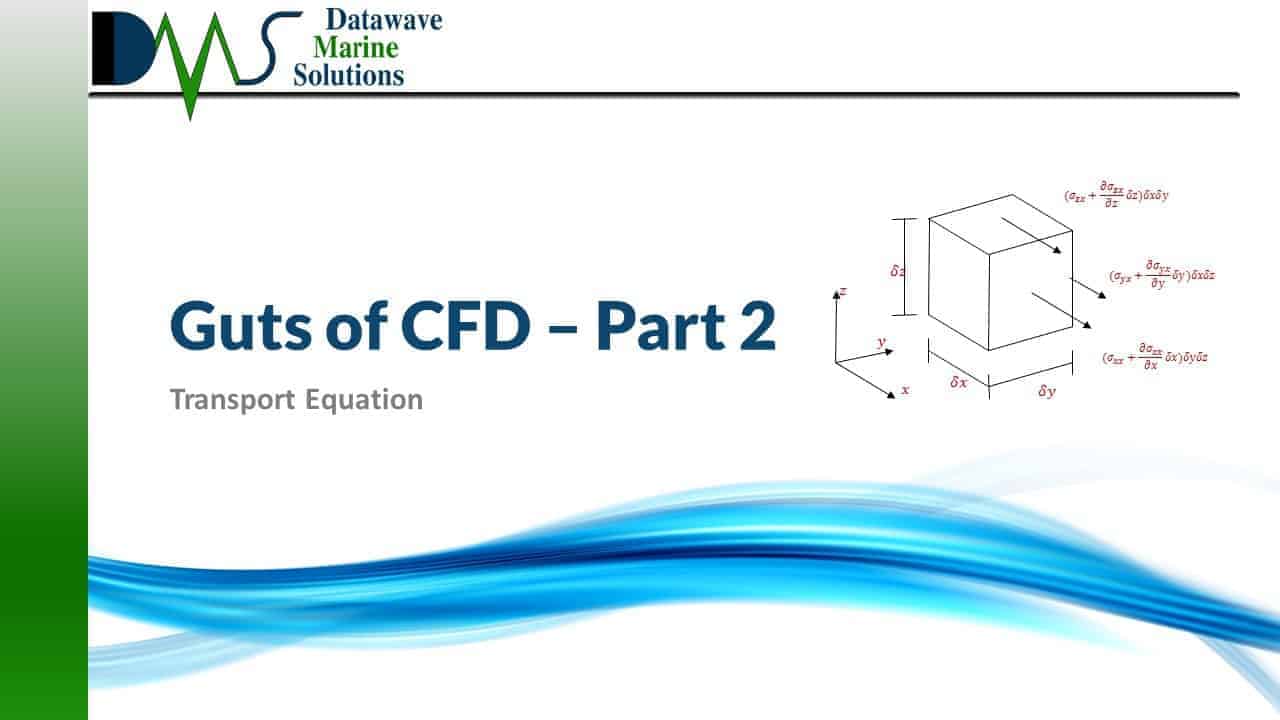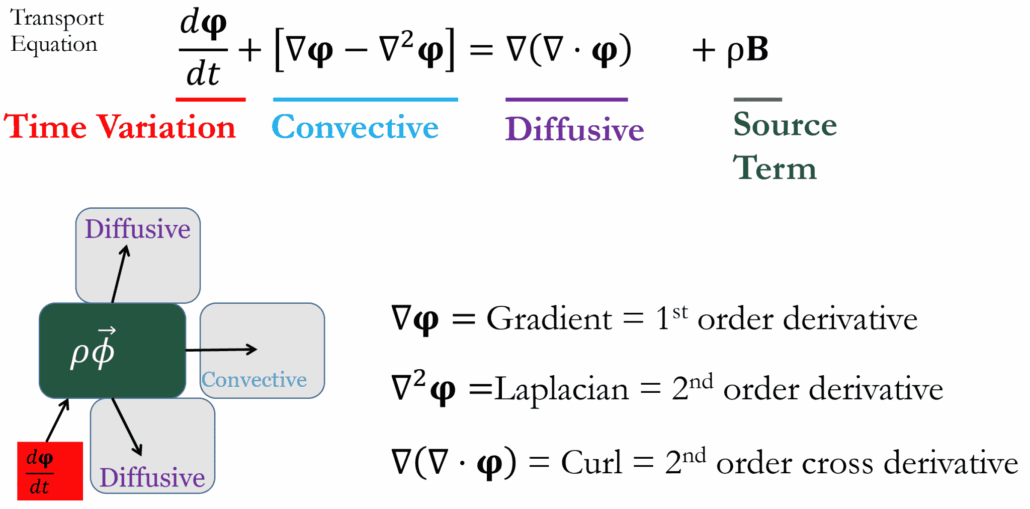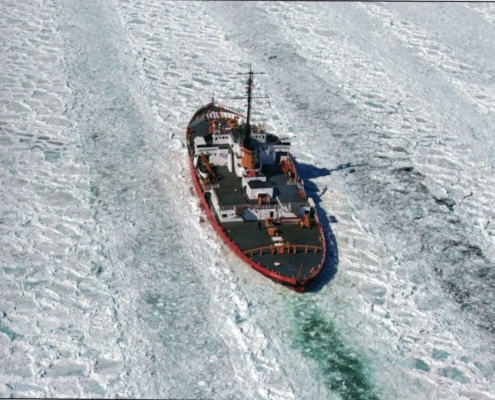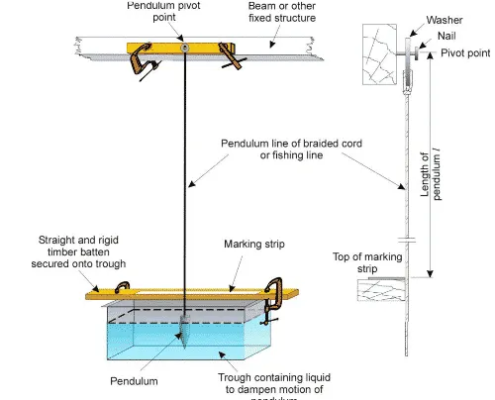A transport equation is any differential equation for any variable that we solve in CFD. But don’t assume one interpretation of the phrase. The term “transport equation” conjures several different levels of expression in CFD.
- Two engineers are communicating. They use a “transport equation” as loose math, emphasizing the derivatives of an equation and ignoring the other terms. Engineers may do this to help communicate a concept.
- A more rigorous definition. The exact and precise transport equation, represented in vector notation, with all terms defined. Mathematically accurate, but too abstract to encode into CFD software.
- A programmatic definition. The transport equation is defined for a single set of coordinates or matrix entry. All terms are defined. This is ready to encode into CFD software. But it probably requires other equations for a complete definition.
We will use the Navier Stokes Equation as a starting template and convert that into a generalized transport equation. (Equation 1) In this example, “transport equation” means the first definition, loose math that emphasizes the derivatives and ignores the other terms. The end goal is to regroup the equation and highlight different classes of derivatives.
To convert the Navier Stokes equation in to a generalized transport equation, we do several things.
- Drop the pressure term. The main variable transported in this equation is velocity. We want to emphasize the relationships with velocity. And the pressure gradient is special to Navier Stokes. (Remember, loose math.)
- Swap out the letter q (velocity) for the letter phi φ. Phi is the general symbol used in transport equations. It stands as the universal signal that this is a generalized transport equation. You will know the definition of phi by knowing what each transport equation addresses.
- Take the total derivative and break out time from the rest of the spacial derivatives.
- Drop any constant terms (1/3μ). Not relevant to our purpose of emphasizing the derivatives.
After those steps and some rearranging, we arrive at the transport equation for velocity. (Equation 2)
Is this the correct transport equation for Navier Stokes? NO! We used loose math to create a generalized transport equation based on Navier Stokes. The purpose was to communicate a concept. The terms of that transport equation are grouped into four distinct and important groups.












